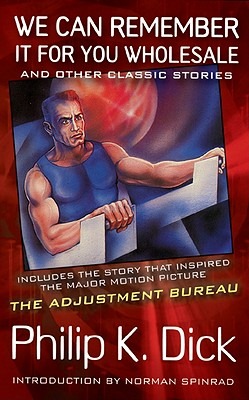 Undeva în viitorul îndepărtat, Pământul a fost consumat de nanoboți scăpați de sub control. Dar aceeași tehnologie e mai apoi folosită de atotputernicii Aristoi pentru a‑l reconstrui atom cu atom din modelele digitale existente. La fel ca planeta, aceștia au refăcut societatea umană pe o bază mai solidă, o civilizație stabilă, fericită și îndestulată sub conducerea lor. Dacă vă gândiți că Aristoi‑i sunt vreo rasă milostivă de extratereștrii vă înșelați: sunt oameni ca toți ceilalți, dar care au demonstrat capacitatea și responsabilitatea de a mânui cele mai puternice și mai periculoase tehnologii ale Omului pentru binele societății.
Undeva în viitorul îndepărtat, Pământul a fost consumat de nanoboți scăpați de sub control. Dar aceeași tehnologie e mai apoi folosită de atotputernicii Aristoi pentru a‑l reconstrui atom cu atom din modelele digitale existente. La fel ca planeta, aceștia au refăcut societatea umană pe o bază mai solidă, o civilizație stabilă, fericită și îndestulată sub conducerea lor. Dacă vă gândiți că Aristoi‑i sunt vreo rasă milostivă de extratereștrii vă înșelați: sunt oameni ca toți ceilalți, dar care au demonstrat capacitatea și responsabilitatea de a mânui cele mai puternice și mai periculoase tehnologii ale Omului pentru binele societății.
Lumea imaginată de autor în roman e foarte complexă și originală printre alte opere de gen, o utopie bazată pe numeroase elemente de tehnologia avansată: nanotehnologia care poate construi orice de la minuscule medicamente pentru eliminarea bolilor la întregi nave și planete, biotehnologia care permite o viață îndelungată, de sute de ani, întreruptă doar de colapsul numit popular boala Dorian Grey, comunicațiile tahionice instantanee care mențin coeziunea coloniilor, realitatea virtuală botezată oneirochronon folosită ca mediu de comunicare, creație și distracție, și Hyperlogos‑ul, versiunea hipertrofiată a Internetului actual, care arhivează practic toată informația trecută și actuală în timp real. Societatea este structurată oarecum într‑un sistem de caste, în vârf Aristoi‑i, imediat sub ei Therapontes, care studiază pentru a deveni la rândul lor Aristoi, și cu populația obișnuită – Demos‑ul – la bază. Granițele între ele sunt însă flexibile, și statutul de Aristoi e acordat pe merit, după ani de studii și examene dificile care fac dovada inteligenței, creativității, dar și ambiției candidatului. Pentru că odată promovat printre „Cei mai buni”, noul Aristoi va conduce mai mult sau mai puțin la discreție un domeniu de câteva sisteme solare, impunându‑și viziunea și stilul propriu asupra zonei și locuitorilor.
 As
As 
 As many bloggers, I like to monitor when my articles get shared on social networks and what do people think about them – actually only on Twitter with a saved search in TweetDeck. A couple of days ago, someone complained on
As many bloggers, I like to monitor when my articles get shared on social networks and what do people think about them – actually only on Twitter with a saved search in TweetDeck. A couple of days ago, someone complained on  Timp de secole, omenirea s‑a extins în general pașnic în spațiul galactic învecinat, fără să întâlnească alte culturi sau obstacole evidente. Având la dispoziție propulsia spin pentru o legătură cvasi-instantanee între planete și nemurirea efectivă prin tratamentele Howard, nimic nu pare să stea în calea expansiunii continue sub guvernarea Polity. Dar într‑o zi, toate coloniile sunt lovite de o forță necunoscută într‑un atac perfect sincronizat și la o scară greu de imaginat; toată tehnologia și sursele de energie sunt distruse, propulsia spin încetează să mai funcționeze și lumile sunt aruncate instantaneu înapoi în epoca preindustrială. Singura legătură cu trecutul glorios rămân cei Dinainte, puținii supraviețuitori modificați Howard pentru rezistență crescută și viață prelungită. După alte secole de refacere greoaie, oamenii se reunesc în Imperium Humanum; dar misterul Erorii rămâne în continuare de nepătruns – să existe într‑adevăr un inamic atât de puternic încât să poată ataca simultan mii de planete, rămânând în același timp complet ascuns până atunci și de atunci? Sau a fost vorba de o conspirație, o trădare din interior? La întrebarea asta continuă să caute răspuns Dinaintea Michaela Cannon – sub comanda ei, minte‑nava Third Rectification {58 de cuplări} ajunge pe orbita planetei Themiscyra, pentru a investiga rămășițele unei stații orbitale din era Polity.
Timp de secole, omenirea s‑a extins în general pașnic în spațiul galactic învecinat, fără să întâlnească alte culturi sau obstacole evidente. Având la dispoziție propulsia spin pentru o legătură cvasi-instantanee între planete și nemurirea efectivă prin tratamentele Howard, nimic nu pare să stea în calea expansiunii continue sub guvernarea Polity. Dar într‑o zi, toate coloniile sunt lovite de o forță necunoscută într‑un atac perfect sincronizat și la o scară greu de imaginat; toată tehnologia și sursele de energie sunt distruse, propulsia spin încetează să mai funcționeze și lumile sunt aruncate instantaneu înapoi în epoca preindustrială. Singura legătură cu trecutul glorios rămân cei Dinainte, puținii supraviețuitori modificați Howard pentru rezistență crescută și viață prelungită. După alte secole de refacere greoaie, oamenii se reunesc în Imperium Humanum; dar misterul Erorii rămâne în continuare de nepătruns – să existe într‑adevăr un inamic atât de puternic încât să poată ataca simultan mii de planete, rămânând în același timp complet ascuns până atunci și de atunci? Sau a fost vorba de o conspirație, o trădare din interior? La întrebarea asta continuă să caute răspuns Dinaintea Michaela Cannon – sub comanda ei, minte‑nava Third Rectification {58 de cuplări} ajunge pe orbita planetei Themiscyra, pentru a investiga rămășițele unei stații orbitale din era Polity. 


